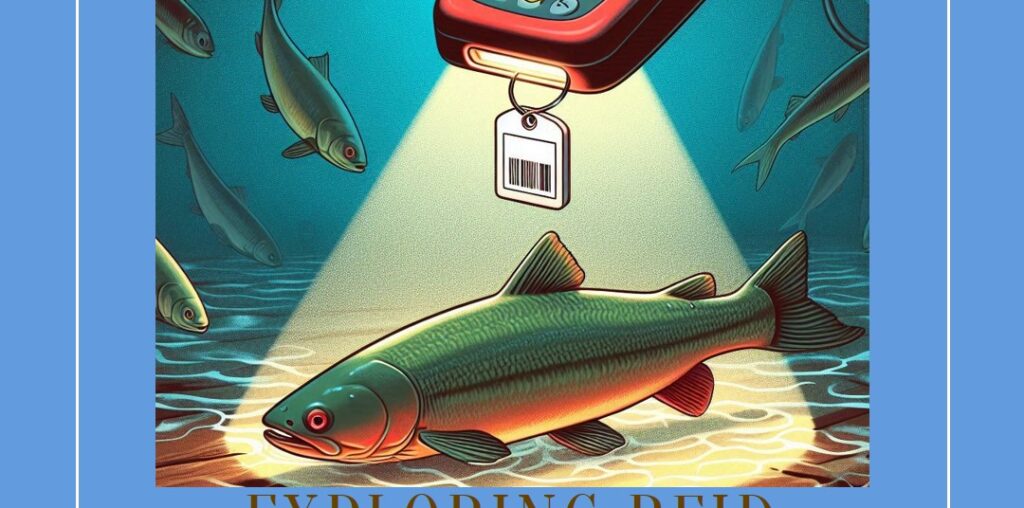As fish farming and aquaculture industries continue to grow, the demand for advanced monitoring technologies has never been higher. RFID (Radio Frequency Identification) tag readers have become a vital tool in managing and tracking fish populations, allowing operations to monitor fish health, behavior, and migration patterns effectively. These devices are an essential part of modern fish husbandry, helping ensure sustainable practices and improving overall operational efficiency. However, a question that many in the industry grapple with is, “What is the average RFID tag reader price used in fish husbandry operations?”
In this blog, we will explore the costs associated with RFID tag readers, what factors influence pricing, and how these readers are being utilized to improve fish husbandry practices.
Understanding RFID Tag Readers and Their Role in Fish Husbandry
RFID tag readers are devices designed to read information stored on RFID tags that are either externally attached or internally implanted into fish. These tags allow farmers and researchers to track individual fish without invasive or harmful handling practices. RFID technology in fish husbandry operations offers several benefits:
- Improved Fish Management: Tracking individual fish helps farmers monitor growth rates, feeding habits, and health status, leading to more efficient stock management.
- Sustainability: RFID readers aid in ensuring the sustainability of fish populations by tracking breeding patterns and migration.
- Reduced Stress: Because fish do not need to be handled directly, RFID tracking reduces the stress placed on fish, improving overall well-being.
These advantages explain why RFID technology has become a popular choice in modern fish husbandry. But how much does it cost to implement such technology?
What Influences the RFID Tag Reader Price?
Several factors can influence the cost of RFID tag readers, making it important to understand the range of available options and their features.
1. Frequency of Operation
RFID systems operate on different frequencies, which can impact their cost. The most common frequencies are:
- Low Frequency (LF): Generally cheaper and well-suited for short-range applications, LF RFID readers are popular in aquaculture. Prices typically range from $200 to $500, making them affordable for smaller fish farms.
- High Frequency (HF): HF RFID readers are faster and have a longer read range than LF systems, making them suitable for larger operations. HF readers are priced between $500 and $1,500.
- Ultra-High Frequency (UHF): UHF RFID systems offer the longest range and fastest data processing, suitable for large-scale or more complex fish husbandry operations. These systems tend to be more expensive, ranging from $1,500 to $3,500 or more.
2. Durability and Waterproofing
Given the nature of fish husbandry, RFID readers must be water-resistant or waterproof, which can drive up costs. Standard readers for non-aquatic environments are less expensive, while waterproof or ruggedized readers designed for harsh, wet conditions often fall between $1,000 and $3,000.
3. Data Collection and Integration
Some RFID readers come equipped with advanced data collection capabilities, enabling them to store and transmit data to cloud-based management systems. Readers with these features typically command higher prices. Integrated systems with real-time data analytics can range from $2,000 to $5,000.
4. Number of Tags Managed
The scale of the operation also impacts costs. A small fish farm requiring only a few hundred tags might only need a basic RFID reader setup, while large-scale operations requiring thousands of tags will likely need more robust, higher-end systems.
Average RFID Tag Reader Price
Based on these influencing factors, the average RFID tag reader price used in fish husbandry operations generally falls between $500 and $3,000. This wide price range allows operators of various sizes and budgets to select equipment that meets their specific needs.
For smaller, less complex operations, an RFID tag reader costing between $500 and $1,000 will likely suffice. These readers typically offer enough range and durability to track fish in smaller ponds or contained systems.
Larger operations, particularly those monitoring fish populations in rivers, lakes, or open-sea environments, often invest in more expensive systems. Prices for these advanced readers range from $1,500 to $5,000, especially for UHF readers that can track fish over larger distances and provide real-time data integration.
The Role of Voda IQ in RFID Tag Reader Technology
Voda IQ is one of the innovative companies pushing boundaries in RFID technology for aquatic environments. Known for its advanced RFID tag readers, Voda IQ offers solutions specifically tailored for fish husbandry, allowing farmers and researchers to streamline operations and track fish populations with greater accuracy. Their RFID readers fall in the mid-to-high price range, making them a strong contender for large operations requiring more complex systems.
With its focus on durable, waterproof readers and data integration, Voda IQ provides competitive options for farms looking to scale and optimize fish tracking technologies. Voda IQ’s commitment to sustainability and innovation has made them a trusted name in the industry.
Commercial Keywords You Need to Know
When researching or purchasing RFID tag readers, you’ll come across a few commercial keywords and phrases that are essential for making informed decisions. Some of these include:
- RFID tag reader price: A common keyword for those looking to understand the cost implications of purchasing RFID systems.
- Aquaculture RFID solutions: This term refers to complete RFID systems designed for fish farming and other aquatic applications.
- Waterproof RFID readers: An important keyword when searching for RFID readers that can withstand harsh aquatic environments.
- Low-frequency RFID readers for fish farming: LF readers are often more cost-effective and well-suited for small to mid-sized fish husbandry operations.
- UHF RFID readers for large-scale fish farms: UHF readers offer long-range capabilities and are ideal for large or more complex environments.
Using these keywords when searching for RFID tag readers will help you find the most relevant products and pricing information.
FAQs about RFID Tag Readers in Fish Husbandry
1. What is the average lifespan of an RFID tag used in fish?
Most RFID tags, especially those used in fish, are designed to last between 5 to 10 years, depending on the environment and conditions in which they are deployed.
2. How accurate are RFID tag readers in tracking individual fish?
RFID tag readers are highly accurate, with error rates typically below 1%, depending on the frequency and environmental factors. High-end UHF readers offer near-perfect accuracy in tracking.
3. Can RFID readers be used in both freshwater and saltwater environments?
Yes, many RFID readers are built to handle both freshwater and saltwater environments, although saltwater models tend to be more expensive due to corrosion-resistant materials and waterproofing.
4. How much does it cost to maintain an RFID system in fish husbandry?
Annual maintenance costs vary but typically range from $200 to $1,000, depending on the complexity of the system and the environment in which it’s used.
5. What are the alternatives to RFID tag readers in fish husbandry?
Other tracking technologies include GPS-based tracking systems, PIT tags (Passive Integrated Transponder), and acoustic telemetry, although RFID remains a preferred choice for its accuracy and cost-effectiveness.
Conclusion
The cost of RFID tag readers used in fish husbandry operations varies significantly based on several factors, including frequency type, durability, and integration capabilities. On average, prices range between $500 and $3,000, with larger, more complex operations requiring higher-end models that offer greater range and functionality.
Companies like Voda IQ provide advanced RFID readers designed for aquatic environments, ensuring that farms of all sizes can benefit from this cutting-edge technology. By choosing the right RFID tag reader, fish farmers can improve operational efficiency, ensure sustainability, and protect the well-being of their fish populations.
Also know about Understanding Pit Tags: Benefits, Applications & Future Innovations in Tracking




